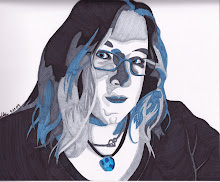1. Obtain horse hair. Ask horse owners if you do not have a horse of your own. You only need a very small amount for each piece of pottery.
2. Use low-fire clay pots. These pots must have small openings to create a large surface to decorate with horsehair. Small openings also reduce the tendency for the clay to crack.
3. Throw the clay pots so that they are thin and remove any excess clay. Trim with a knife and smooth the surfaces as necessary.
4. Prepare the pot for the burnishing by rubbing baby oil into it and then dampening it with a wet rag. Sand the pot completely with an extremely fine sandpaper.
5. Rub the entire surface of your pottery with a polished stone.
6. Place the burnished pot into a raku kiln and heat it to approximately 1,400 degrees F. Remove after approximately 20 minutes and drop one horse hair at a time onto the pot until you have the desired marking pattern. The horse hair will sizzle and leave a thin fuzzy black mark where it touches.
7. Cool the pot and then brush off the horse hairs. If you are unsatisfied with the pattern, reheat the pot and start over.
8. Experiment with different horse hair markings. Some potters prefer to layer hairs all over the pottery, while others choose certain sections, such as the lower edges of the pottery, to decorate with the horse hair marks.
new artists -
Clark Sorensen
I stumbled upon his work while surfing the web for ideas, and was instantly intrigued by his designs, and their practicality. Clark Sorensen grew up in Salt Lake City, Utah, where he earned a Bachelor of Fine Arts Degree in Sculpture with honors from the University of Utah. He lived in France for two years before moving to California. After college, Clark worked a short while as a costume designer and illustrator. He then became a computer animator, working primarily on video games. His skills have contributed to the creation of over 20 games during his 15 years in the video game industry. Sculpting and painting have always been a part-time passion for Clark but for the past 5 years he has devoted his full attention to creating art. He has been receiving worldwide attention for his unique series of urinal sculptures. His work has been featured in numerous magazines and papers throughout the world.
Faith Ringgold
Faith Ringgold was born and raised in Harlem and educated at the City College of New York, where she studied with Robert Gathmey and Yasuo Kuniyoshi. She received an M.A. from the college in 1959. She was greatly influenced by the fabric she worked with at home with her mother, who was a fashion designer, and has used fabric in many of her artworks. She is especially well-known for her painted story quilts which blur the line between "high art" and "craft" by combining painting, quilted fabric, and storytelling. She modeled her "story quilts" on the Buddhist Thangkas, lovely pictures painted on fabric and quilted or brocaded, which could then be easily rolled up and transported. She has influenced numerous modern artists, including Linda Freeman, and known some of the greatest African American artists personally, including Romare Bearden, Jacob Lawrence, and Betye Saar. Her work is in the permanent collection of many museums including the Solomon R. Guggenheim Museum, the Metropolitan Museum of Art, the Museum of Modern Art, and other museums, mostly in New York City. In addition, Ringgold has written and illustrated seventeen children's books including Tar Beach and has exhibited in major museums all over the world. She is professor emeritus in the University of California, San Diego visual art department. Ringgold was also the plaintiff in a significant copyright case, Ringgold v. Black Entertainment Television. Black Entertainment Television (BET) had aired several episodes of the television series "Roc" in which a Ringgold poster was shown on nine different occasions for a total of 26.75 seconds. Ringgold sued for copyright infringement. The court found BET liable for copyright infringement, rejecting the de minimis defense raised by BET, which had argued that the use of Ringgold's copyrighted work was so minimal that it did not constitute an infringement. Ringgold and her daughter, the writer Michele Wallace, were founding members of the National Black Feminist Organization. Ringgold is represented by ACA Gallery. Her second daughter Barbara also has a website selling Faith Ringgold's works at affordable prices.

No comments:
Post a Comment